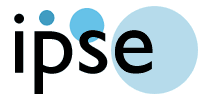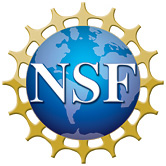Applications Activity: Nano-Tex
| View full, printable version of this activity |
Audience: Middle school class
Time Needed: 50 minutes
Objectives:
- Introduce nanotechnolgy used in creating new fabric
- Understand the difference between dependent and independent variables
- Learn to develop hypothesis and experimentation
- Realize impact of technology in everyday things
Activity Description:
If spilling soda, spaghetti sauce, or orange juice on themselves strikes your students with the fear of wearing dirty clothes among their peers, Nano-Tex, LLC, would encourage them to shop for pants and shirts made with NANO-CARE® fabric - pants and shirts that almost magically resist stains and repel water, giving us the ability to walk away from messy situations with clean clothes. Nano-Tex supplies material to many well-known brands (Nano-Tex).
What looks like magic in the Nano-Tex fabrics is actually the product of a science called nanotechnology, a cutting-edge field that deals with machines, materials, structures, and how they behave at the scale of atoms and molecules, or the nanoscale. By working on this small scale, scientists are able to create enhanced materials with desirable properties, such as stain-resistance.
Students should have a basic understanding of science inquiry and of atoms and molecules before beginning this activity. This activity would fit well into any unit about atoms and molecules, the nature of science, or inquiry. If you are interested in an interdisciplinary approach, this activity could also be combined with a social studies class studying advertising or mass communication.
Activity Materials:
Each group of 2-4 students should have the following:
- 6 swatches of stain-resistant fabric
- 3 swatches each of 2-3 other fabrics
- Stain agents (see below)
- Beakers or cups to hold water and stain agents
- Eyedroppers for applying liquid stain agents
- Plastic knives or spoons for applying other stain agents
- Several buckets for washing fabrics
- Laundry detergent and water
- Several large dish pans with low sides
- Stopwatches or clocks with second hands
- 1 large sheet of paper or poster board
- Markers
Each individual student should have the following:
- A lab notebook or loose leaf for recording observations
- Lab coat or smock
Stain agents
- Water
- Grape juice or fruit punch
- Cooking oil
- Ketchup
- Mustard
- Peanut butter
- Grape jelly
- Acrylic paint (optional)
- Fabric dye (optional)
- Writing utensils like markers, pens, pencils, or chalk
- Dirt or potting soil (optional)
Supplemental Materials:
- Teacher's Guide: Sample Poster (pdf)
- Handout: Worksheet (pdf)



